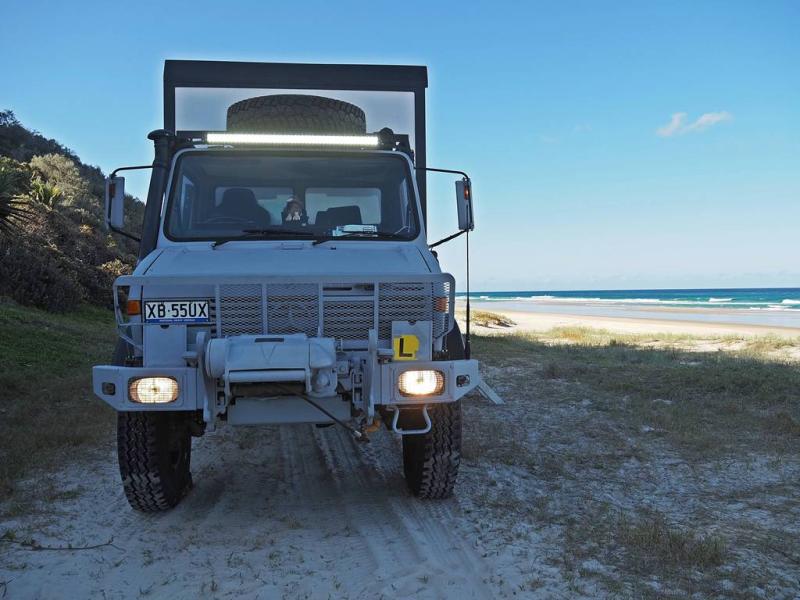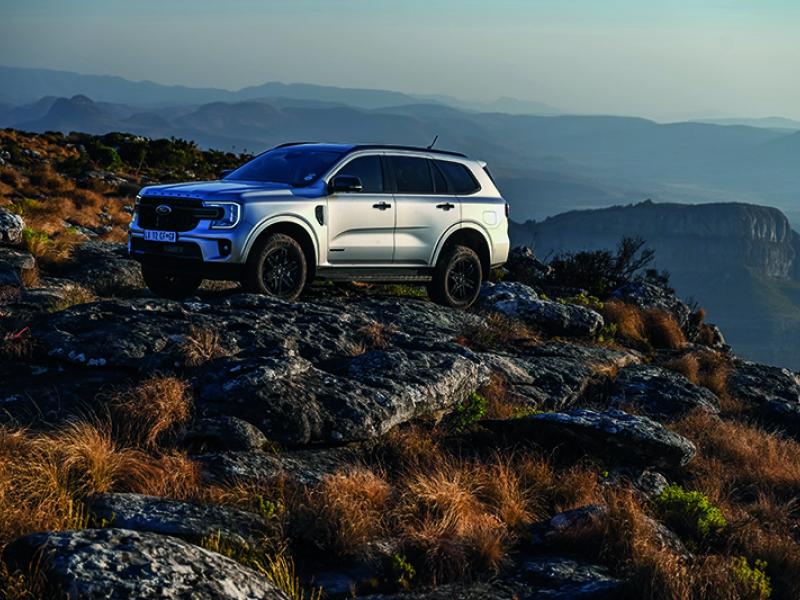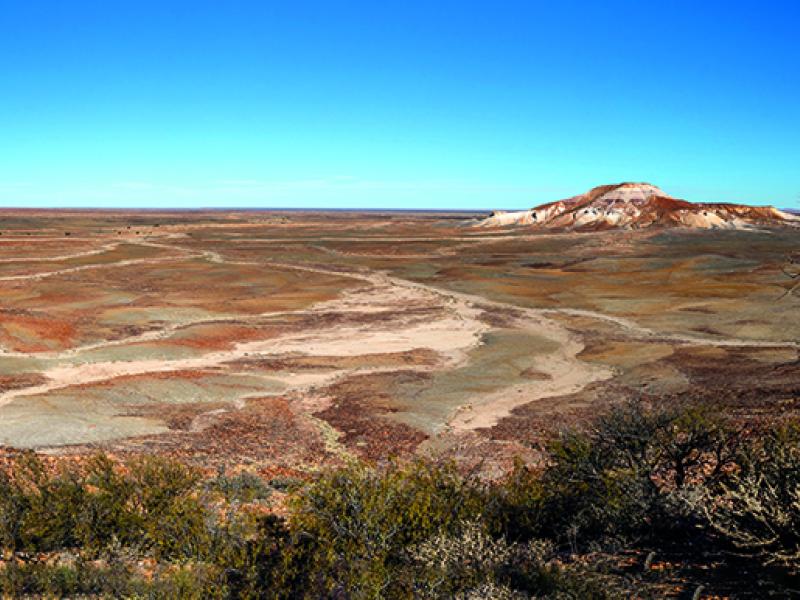In this, his second article on he and his family’s 4WD expeditions in Morocco, keen Kiwi overlander Aaron Rich takes us to where the Sahara meets the Atlantic Ocean
Story and photo by Aaron Rich
This article tells the story of our first expedition to Plage Blanche, where the Sahara Desert meets the Atlantic Ocean.
Plage Blanche is an almost uninhabited stretch of the Moroccan coastline, about 320km (200 miles) south of Agadir. There are no roads and almost no infrastructure in the area – just an isolated stretch of beautiful and wild sandy beaches. Driving Plage Blanche has become part of a route popular with those on 4WD expeditions to Morocco.
I won’t dwell here on our failed initial attempt to access Plage Blanche the ‘normal way’. Suffice to say that what I mean by the ‘normal way’ was rendered inaccessible by the recent episode of extreme weather. We were forced to accept that if we were to undertake this route we would need to find another way. And the other way, we decided, would involve leaving the pavement north of Tan-Tan (a desert town in Morocco’s south-west) to head off-road across more desert terrain until we reached the coast overland.
Kasbahs old & new
We weren’t long on our off-road route before we discovered our first point of interest of the day; a rather large ancient kasbah that had fallen into ruin. We explored the kasbah, to the extent that it was safe to enter, and took some interesting photos. I hope that the one photo I have space to include with this article will give you an idea what the old kasbah was like internally. I find these old decaying buildings of great interest because, like most of the readers here, I grew up in New Zealand, which given its comparatively short history lacks any similarly historic landmarks.
Of course, not all kasbahs dotted around Morocco’s deserts are old and decaying. We also stayed in a new kasbah and generally found it to be a wonderful experience to stay in such off the beaten path places as this.
You tend to meet guests with similar interests because there is no access for normal cars, hence everyone arrives in an off-road vehicle of some description and most are undertaking their own overland expeditions of one type or another.
The photo (included here) that shows my 4WD climbing a rocky and sandy hill is one of my personal favourite photos from Morocco. The location of that photo is nearing the coast. You can’t easily make out the route we have been travelling, but it is essentially the land visible in the direct background to our vehicle. We camped that evening on cliffs above the ocean and to the south of Plage Blanche, where a few camels roamed a short distance away.
Built of blankets?
The following day we packed up camp and drove along the cliff tops, with the Atlantic Ocean to our left. All day we passed by small extremely basic, even by Moroccan standards, fishermen’s dwellings.
These were constructed, it would seem, of whatever their creator could get their hands on. I’ve provided a photo of one up close that shows the outer layer consists of thick wool blankets. It’s not as silly as it might seem. We have stayed in traditional Berber-style Moroccan tents made from thick wool and noted they were very effective at insulating from both heat and cold and sheltering from wind. Wool walls actually work pretty well! We passed by quite a number of these simple dwellings throughout the morning, sometimes just one or two at a time and sometimes quite a few together.
Finally we could see the beaches of Plage Blanche. We would just need to find a way down from the cliff tops and into the oued to get there. This proved to be the first obstacle of the day, as most of the routes down to the oued looked unstable and potentially dangerous. Eventually we located a steep but safe route down to the oued, however prior to driving down into the oued the big wet patch visible in one of my photos wasn’t there! What happened was that I did my usual checks before taking the vehicle down. I parked at the top and walked down and proceeded to stomp around on the terrain in the oued to check that it was suitable for driving on. It was very solid underfoot and passed my tests with flying colours. So back I went and brought the 4wd down.
And then something unexpected began to slowly unfold. Not under my weight, but under the vehicle’s weight, water deep beneath the surface began to come to the surface. And the surface began to turn from solid to something I can only describe as ‘mud jelly’. Any overland 4WDer should be familiar with how to drive different terrains; rock, sand, mud etc. But this was something totally different that I had no experience of.
Sand is normally at its firmest and safest to drive when wet, so this wasn’t behaving as it looked like it should. As soon as we could see the surface deteriorating we immediately tried to drive back up the sandy bank. The photo doesn’t, as they usually don’t, show how steep the climb up really was. If the incline hadn’t been primarily dry soft sand we could have driven it without need for too much momentum, but it was one of those times when with insufficient momentum you could only get half way up before the tyres began to dig down and progress came to a halt. The only way to do it would be to get back over the mud jelly and line up for a run up.
That sinking feeling…
There wasn’t actually to this point any evidence that the mud jelly wasn’t driveable and indeed I did manage to drive across it without breaking the surface when getting ready for my run up. My growing anxiety was based on a concern as to how this unusual surface might behave by the time more water came to the surface – would it begin to behave like sinking sand for instance? We didn’t know and preferred not to find out. So close to reaching our destination our motivation to make it the final way to Plage Blanche rapidly evaporated.
In one of the included photos you can just see me kneeled down by my vehicle; I was deflating the tyres to very low levels, just in case I only got one shot at this. I also took my recovery boards down from the roof and laid them over what appeared to be the worst section of the mud jelly. And just then some locals arrived to help out. These were fisherman who lived in some of the simple little dwellings up on the nearby cliff tops.
No English was spoken, but I gathered they knew how to deal with mud jelly. They began pulling out some of the plants that grow there and throwing the leafy branches down. Finally, it was the moment of truth, and it was something of a (much appreciated!) anti-climax after all that as I zoomed up the bank first try and without any real issue. That was enough excitement for one day and when one of the fishermen indicated we were invited back to their place for lunch we were happy to accept the offer. And it would turn out to be a very memorable opportunity to get a glimpse into the lives of ordinary Moroccan people.
A privilege
Although it was about as basic inside as expected, I felt privileged nonetheless to be invited in. We were first served some very sweet tea, as is customary, and then our hosts prepared a simple but delicious meal based around their main food source – fresh fish.
Communicating was difficult without a common language, but I wished to enquire where the big shipwreck was that a number of overlanders had posted photos parked beside down on the beach somewhere nearby. I showed the fishermen a photo in one of my books on Morocco, to which the reply was an angle grinder noise - with hand motions to match - and the word “Casablanca”. So it seems the shipwreck is no longer there. No matter, our day out at the fisherman’s village was proving far more interesting anyway.
Notice the old Land Rover in the background of one of the photos. I’m not sure its age, but I presume it is a model from the 60s or 70s at latest. The small building behind the Land Rover is where they keep their catch of fish in a chest freezer. I couldn’t see what powered the chest freezer – it was the only electric appliance they had and I presume there may only have been enough electric generation to supply its requirements. I heard no fuel powered generator and equally saw no solar panels, so I didn’t get to the bottom of that and have remained curious. They use the freezer not only to store the fish, but also to make large quantities of ice; enough to fill the whole back of the Land Rover so that they can deliver their catch to market periodically.
The ‘military road’
Upon leaving the fishermen’s tiny village I offered payment for lunch, which as we’ve noted before, was quickly pocketed without so much as a glance to even see what I had offered. Our host indicated that we should use the ‘military road’ and I knew what he meant, as I was aware there was a military outpost nearby and had seen on my maps a route leading to it.
However, when we attempted to follow that route we found it cut off in many places and really quite difficult going. After spending some time attempting to follow various tracks that didn’t really go anywhere, we decided that it may actually be better to abandon the tracks altogether and just drive overland.
I could see on my mapping software where the closest point would be to intersect with the paved road to Tan-Tan and we just headed slowly overland towards that – at times ploughing a new path. It worked and we arrived at Tan-Tan later that evening.
Footnote
As an end note, we did eventually make it all the way along the sandy beaches of Plage Blanche, but that was to be on a subsequent trip to Morocco, not this one.
Aaron Rich
Aaron Rich is a Kiwi 4WD overland adventurer who returned ‘home’ in 2016 after living and working in the UK for ten years. With partner Sylwia he has a son and two daughters; the eldest is 10. Whilst in the UK Aaron bought a Mitsubishi Pajero (Shogun) and converted it into an off-road tourer suited to the type of (well) off the beaten track overlanding he prefers. To date Aaron and family have used their modified Pajero to tour 26 countries spanning North Africa, Europe, the Balkans and ultimately reaching as far as Turkey. Commencing early May they will drive their Pajero from Vladivostok, in the Russian far east, to the UK via Central Asia. Their route will entail significant off-road stretches and will be their biggest undertaking yet.
To read the full story in the May 2019 issue of NZ4WD go to Zinio.com (April 22) or purchase your own hard copy at the Adrenalin store.







